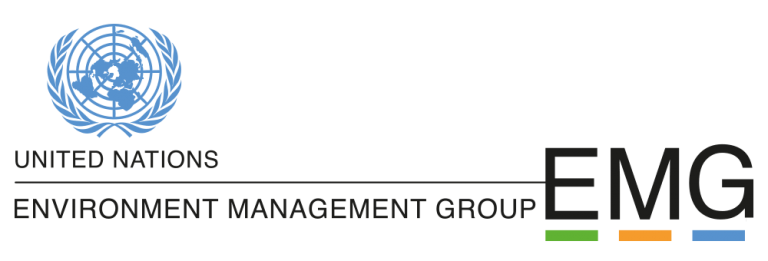
Maximising EMG Effectiveness
The Environment Management Group was established in 2001, pursuant to the General Assembly resolution 53/242 , following the reform agenda of the Secretary-General of the United Nations to improve inter-agency coordination in the field of the environment and human settlements. The EMG was expected to provide a forum and a mechanism to enhance complementarity between the analytical/normative activities and the operational role of the UN system agencies through adopting a problem-solving, results oriented approach, promoting coordination, information exchange, joint action and synergy among the UN agencies on environment and human settlement issues.
In light of the 2030 Agenda for Sustainable Development, Member States invited the Executive Director of UN Environment to examine if the EMG, after having functioned for 15 years, has responded to the expectations and whether it is fit to respond to today’s coordination challenges in the field of environment. Resolution 1/11 of the First Session of the United Nations Environment Assembly (UNEA) of UN Environment, invited the Executive Director of UN Environment as Chair of the EMG, to identify possible measures to maximize the effectiveness and efficiency of the Group in consultation with the Secretary-General and the Chief Executives Board, and to submit a report with recommendations to the UNEA for consideration at its second session.
The 20th meeting of the Senior Officials of the EMG (2014, see SOM archive for meeting documents) considered this issue and agreed to establish a task team to consider the EMG’s mandate, Terms of Reference, effectiveness and fitness for purpose more broadly, including its contribution to the 2030 Agenda.
At their 21st meeting (2015), the Senior Officials considered a draft report by the Task Team and decided to extend the mandate of the Task Team to “finalize the report taking into account the comments of the Senior Officials.” The report Maximizing the effectiveness of the EMG in the context of the 2030 Agenda for Sustainable Development was issued by the Task Team for submission to the Second Session of UNEA. The report captures key findings and recommendations by the Task Team covering procedural issues related to EMG’s modalities of work as well as substantives issues related to EMG’s mandate and future focus to maximize its effectiveness in supporting the 2030 Agenda and the Sustainable Development Goals (SDGs).
Resolution 2/5 of the second session of the United Nations Environment Assembly, requested the Executive Director of UN Environment to report on progress on the implementation of the recommendations and findings of the effectiveness report to its next session. Consequently, at their 22nd meeting (2016), the EMG Senior Officials requested the Task Team to prepare a proposal for implementing the recommendations in the EMG effectiveness report for consideration of SOM23 and the third session of the UNEA. It was also tasked with updating the EMGs Terms of Reference.
In addition to the EMG Effectiveness Report, the Task Team has prepared the paper “Synergies between the implementation of the SDGs and international environmental objectives”. The paper examines SDG implementation measures and implementation processes for existing internationally agreed environmental objectives in three areas: SCP, biodiversity and chemicals and waste management. It builds on existing reports, analyses and information on the linkages between the SDGs and existing international environmental goals and processes.